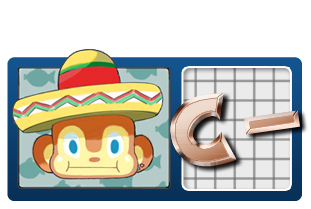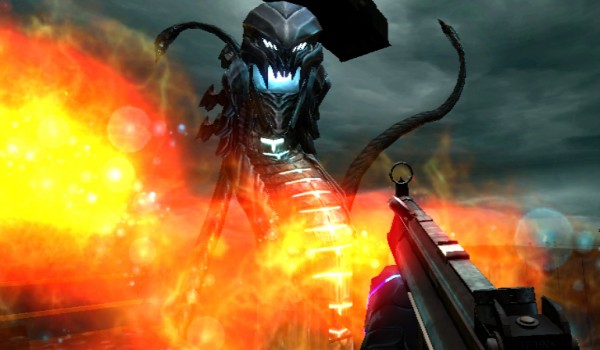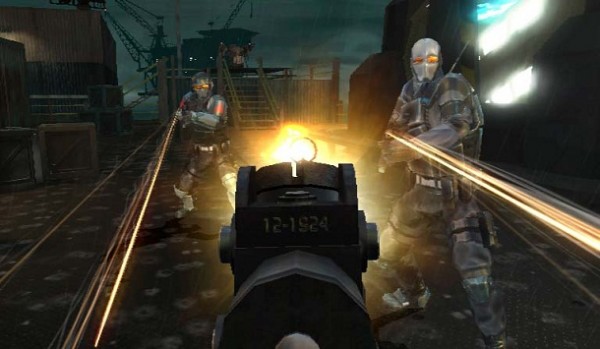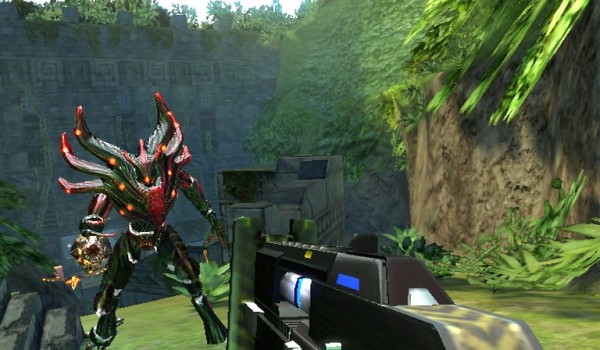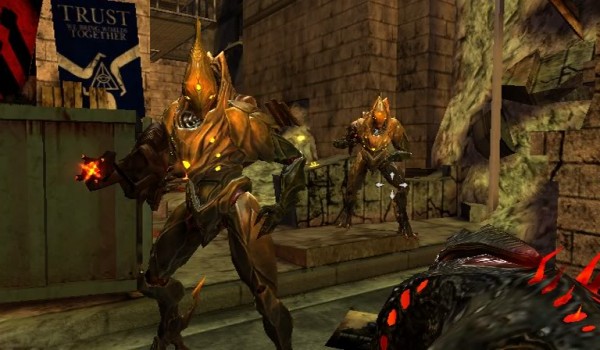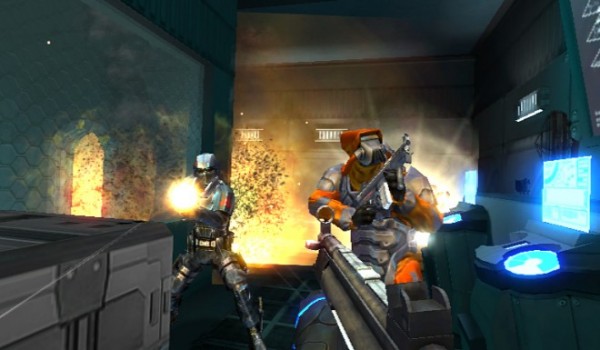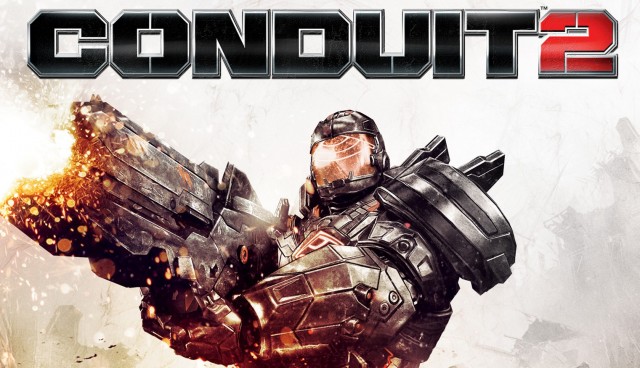 First, a quick apology to everyone, including SEGA, for the lateness of this review. I unfortunately lost my access to high speed internet shortly after receiving my review copy, and so I had difficulties with the multiplayer portion of the review throughout the summer. The multiplayer played a significant part in the final verdict, so I hope the good folks at SEGA who sent the review copy won’t mind the tardiness.
First, a quick apology to everyone, including SEGA, for the lateness of this review. I unfortunately lost my access to high speed internet shortly after receiving my review copy, and so I had difficulties with the multiplayer portion of the review throughout the summer. The multiplayer played a significant part in the final verdict, so I hope the good folks at SEGA who sent the review copy won’t mind the tardiness.
The original Conduit pioneered the Wii first person shooter, allowing every player to customize the game’s motion controls in a fashion that best suited how they wanted to play the game. It had its problems, however. Its online was easily hackable and virtually broke the game, and the single player offered absolutely nothing that hadn’t been done better in numerous other shooters. The environments, being based largely on modern Washington DC, were fairly generic aside from the odd monument. The level design was linear, and most of the weapons were pretty typical for the genre. With the announcement of Conduit 2, High Voltage Software acknowledged the problems of the original and promised to solve these problems with the sequel. Does Conduit 2 improve over the original, or does it fall even flatter?
Gameplay
Conduit 2 is a deeper game than the original. Some levels have multiple paths you can take. Others allow you to complete different areas in any order you want. You can also customize your deployment layout before every mission with weapons you’ve unlocked in the campaign.
When it works right, Conduit 2 can be a very fun game. The weapons range from your standard machine guns and sniper rifles to guns that can collect and refire enemy bullets and make you temporarily invisible. There’s a wide range of weapons available in Conduit 2, and it lends itself to a tactical player who doesn’t always go in guns blazing. Sniping from a distance, using invisibility to sneak around cover, and using the AEGIS, device players can essentially create their own on the go cover by collecting enemy weapon fire.
The controls are also superb. While the pointer-only controls aren’t much better than they where in the original Conduit, the Motion Plus controls make Conduit 2 one of the best controlling first person shooters on the Wii, only really matched by Red Steel 2, another M+ game. All control customization limitations from the last game have also been removed, allowing players to customize everything to their hearts’ content. My only real qualm with the control customization is how it’s handled in game. When I’m in the middle of battle, and I decide I want to tweak them, the game puts you straight back into battle while you change the settings so that you can test them. The problem here is that you’re constantly being knocked around by enemy fire, which makes in-game customization frustrating. So while you can technically change the controls at any time, you’d best find a quiet spot first. For players who prefer the clunkier, slower, but more stable twin sticks for their first person shooters, Conduit 2 does allow players to use the classic controller. So no matter what your control preference is, Conduit 2 provides a solution for you.
Conduit 2 has some great ideas, especially in regards to its weapons, and it almost succeeds in being what the original Conduit was promised to be. Almost. Unfortunately, Conduit 2’s single player campaigne is marred by lazy game design and unfinished coding, which has resulted in a game that feels incredibly unpolished. It’s no wonder that the game was delayed as much as it was, as there were clearly some problems during development.
First of all, the level design. Much of the time, Conduit 2’s levels are fairly well made. They are loaded with well-placed enemies, have lots of cover, and generally force the player to think their way through instead of just charging in guns blazing. Though the artificial intelligence can often be quite poor, the level design pretty frequently makes up for it, giving the AI plenty of places to take cover and often putting the player out in the open. Many levels also contain simple puzzles that require the player to stop and think for a moment, as well as some hidden secrets to find. Sometimes though, Conduit 2 throws good level design right out in the window in favor of some of the worst game play design I have ever seen.
Several areas in the game are filled with only one type of enemy. When you first enter Atlantis, you encounter robots called “fixers”. These four legged machines have a very simple tactic: swarm you and hit you until you die. They use no tactics, have no interesting kind of behavior, and they’re the only thing you fight for most of the level. You eventually encounter some flying machines near the end, but they are not nearly as numerous. So you fight the same boring enemy, over and over again, for about fifteen minutes, without any interesting battle scenarios encountered in the meanwhile. An area in Washington DC has a similar, magnified problem. Here, you fight little creatures called tear mites in a subway system. Much like the fixers, they use no tactics. They simply run at you and beat you to death. Unlike the fixers, these things respawn, and they respawn so quickly that I could never kill enough to get to the egg sacks without being attacked from behind and beaten to death by them. Eventually I just lowered the difficulty settings so that their respawn rate would slow down. Loading areas with one type of enemy that does nothing but run up to you and smack you is terrible game design. Thankfully, this type of design disappears entirely after the second Atlantis mission, but considering even the original Conduit had the sense to diversify enemies and make sure that fighting them didn’t become monotonous, this sort of design is inexcusable in this game.
Even worse than occasionally terrible level design is Conduit 2’s utter lack of polish. Fallen objects levitate above the ground, enemies become caught on the environment, the artificial intelligence occasionally just runs into walls or does other nonsensical things, and the frame rate’s terrible. Whenever any serious action began to happen on screen, the frame rate would take a noticeable hit, and completely broke the immersion I expect from Wii first person games. Finally, the game has one bug that is completely, utterly inexcusable, and as of this review has not yet been fixed through in-game patches. As I switched between weapons, the game would sometimes “lock” between weapons transitions. When this happened, it left me completely unable to fire my weapon, and would only correct itself once I had been killed. This happened to me over a half dozen times in Conduit 2, and is easily one of the worst bugs I’ve encountered in a game in a long time. Considering how much this has happened to me, I don’t know how it escaped the game’s testers, especially after the 5 month delay into 2011. This bug, combined with the general lack of polish, makes Conduit 2 feel like a beta preview demo, not a complete game.
It’s a shame too, because when Conduit 2 works it is a lot of fun. Had the level design in some of the areas been done with a bit more care, and had the game itself been given the polish it needed, I do think Conduit 2 would probably be my new favorite first person shooter on the Wii. Better than the superbly polished GoldenEye. Unfortunately, that’s just not the case.
Conduit 2 is more than just a single player campaign though, and I’m happy to say that the multiplayer works a hell of a lot better. Constant patch updates have kept out the hackers, the bug I mentioned from the single player is non-existent, and the frame rate is pretty solid. The game play modes are largely your standard first person shooter fair. There are variations on the typical death match formula, and a variation on the capture the flag formula where you must invade the opposing team’s baser and destroy their generator. Perhaps the most original mode is “Bounty Hunter”, a mode brought over from the original Conduit. Here, everyone is given a target to hunt. The only way to get points is to kill your assigned target, meaning you get nothing from randomly killing other players or your hunter. These largely tried and true modes are a lot of fun.
The multiplayer mode also has some depth. By playing the multiplayer, plays earn in-game currency that they can use to buy armor parts, weapons, and abilities. Players can use these items to customize the abilities and the look of their multiplayer character. The armor customization is superficial and doesn’t really add much to the game play, but the player’s loadout can be customized to suit certain tactics and strategies that a player might prefer. Those who prefer explosive weapons, for instance, might want to get the explosive focus to increase their weapon’s blast range. People who prefer running and gunning over taking cover and sniping would want to get the heavy armor and essence salvage. The first power up offers better defense while the other helps the player heal immediately after they’ve killed someone. Runners and gunners would also want to get the stabilizer, which improve accuracy while moving, and metal legs, which allow a player to run indefinitely. The customizable loadout allows individual players to utilize different strategies and their own methods of play. Players can have a total of four loadouts at any one time, and can switch between them before they respawn if their current strategy isn’t working.
One worry I had about these upgrades was how unbalanced it could have made the game, especially for the base player who is just starting out and can’t afford the rather expensive upgrades or weapons yet. I am happy to say that I didn’t find it too difficult starting out. I never found anyone dominating because they could take too much damage or their weapon was too good. Once I started buying the power ups, I discovered why: while they are advantageous, they aren’t so effective as to put players without them at a disadvantage. Some power ups I didn’t even notice, like Salvage Essence, because while it jumpstarted healing, it still didn’t heal me fast enough to give me full health before I encountered someone else.
Conduit 2 has the deepest multiplayer mode of any Wii FPS that I’ve played. It’s also one of the most feature-rich, with 12 maps, 14 different modes (though many are derivative of the standard deathmatch), an Invasion mode, the aforementioned patch system to give constant updates to the game’s balancing and code, and finally a special friends list called “Allies” which can hold up to 96 people and doesn’t require friend codes. It also has a player cap of 12 people, and allows people to join mid match so they aren’t stuck waiting for a new match and so the people playing aren’t doomed to be down a man because someone decided to quit. In Conduit 2, empty spots on a roster are filled with AI bots, but I find these can range from competent to useless, so I wouldn’t exactly call this a positive. I don’t believe there is one other game on the Wii that can boast all of these features. So if you want great online experience on the Wii…this is it.
Graphics and Sound
Graphically, Conduit 2 is a disappointment. High Voltage has talked a big game in regards to the Quantam 3 engine, but I’ve yet to see them doing anything great with it. When the frame rate is steady, Conduit 2 is one of the best looking realistic games on the Wii, with plenty of effects, fairly well done environments, and a shiny look that I usually don’t see on the Wii. The problem is that the game doesn’t run smoothly. Whenever a bunch of enemies show up on screen, the frame rate becomes erratic, and it’s very noticeable even to the untrained eye. When the game does run smoothly, it is REALLY good to look at. The final two boss fights, which take place in enclosed areas without many enemies, run very smoothly, and look very impressive as a result. The terrible frame rate, combined with some ugly models, make for a game that looks very unpolished. Either the Wii can’t handle what HVS wants to do with it, or HVS couldn’t get the game running well on the Wii before release. Either way, HVS has had plenty of experience with the hardware, so I would expect them to know the limitations of it and themselves by this point. Hopefully High Voltage will take what they’ve learned with this game to make something more polished next time.
On a happier note, the environments are a huge step up from the last game. If Conduit was generic, Conduit 2 is artistic. It’s a crying shame that HVS chose an oil tanker to be the level they used to introduce Conduit 2, because the rest of the game is loaded with beautiful alien environments. China is a beautiful location that combines great looking Chinese architecture with alien tech. The boss zone is particularly impressive, taking place in an arena with dozens of Chinese lanterns just hovering overhead, and above them a massive glowing alien symbol. Atlantis is completely alien, a massive green structure with lines of light crisscrossing the floor. The Conduit 2 art team went above and beyond making sure the environments made the best use of their locales, and thew in plenty of alien technology to make them look even more fantastical. This is what the original Conduit needed. Even when you go back to Washington, you will rarely find yourself fighting in common office space.
Conduit 2’s music team also did a pretty solid job. Now, there is nothing in Conduit 2 that is equivalent to the epic orchestral works on Halo, and certainly nothing I’ll be putting on my netbook, but the music often works well with developing and maintaining the atmospheres in the different levels. The voice acting is more mixed. Some of performances are pretty solid, like Prometheus, Adams, and Li. Michael Ford is now voiced by Jon St. John from Duke Nukem, so he generally sounds like Duke Nukem’s cocky self. Much of the time this works, but sometimes when the character is required to deliver emotion, John falls flat. Much of the rest of the cast ranges from mediocre to terrible, especially Andromeda.
Overall
Conduit 2 is a depressing game. With polish and some improved levels, it could have been one of the few bright spots in the Wii’s dismal 2011 line up. Instead, its unpolished campaign makes it very difficult to recommend. I suppose the big question is, did I have fun with it? The short answer is yes. By the end of the game I was smiling. The vast majority of the levels are well made, and the poorly designed areas became easier to overcome once I lowered the difficulty to slog through them quicker. The gun freezing bug, while it popped up more than enough to warrant an extensive complaint, was still very rare in what was a six hour campaign. The Wii controller felt great to use, and I loved racking up headshot after headshot with a flick of my wrist. I enjoyed the simple puzzles, and the boss battles at the end of each level offered a nice change in pace. Regardless of all of this, the lack of polish still stands as a major problem, and one I believe many won’t have the patience to get through when they could just as soon throw in GoldenEye or any number of first person shooters from the HD consoles.
I recommend Conduit 2 to anyone looking for a deep, fun online first person shooter that effectively utilizes the Wii’s motion controls. The multiplayer is a blast, and if that’s all you really need then Conduit 2 is the game for you. If you need a solid, polished single player campaign, I highly recommend you just buy GoldenEye or Red Steel 2. Conduit 2 is a fun game, just don’t expect anything on the level of Halo.
Positives
– Many well designed levels in single player
– Most fully featured multiplayer on Wii
– Superb motion controls
– Some solid CGI cutscenes and voice work
Negatives
– Some poorly designed areas hamper the experience
– A nearly game breaking bug completely ruins the experience in single player
– The terrible frame rate mars many otherwise gorgeous levels
– Production values are pretty low budget overall, and it shows
